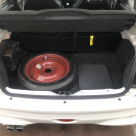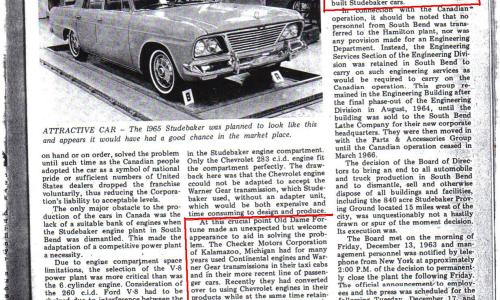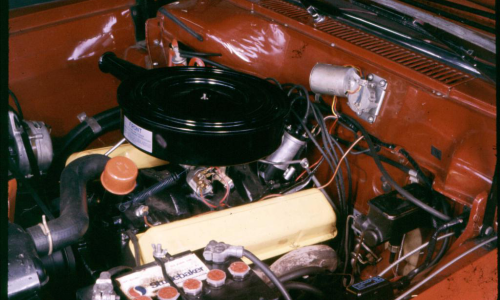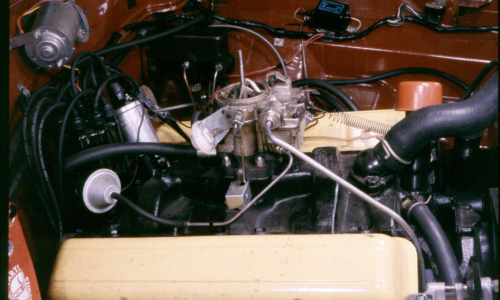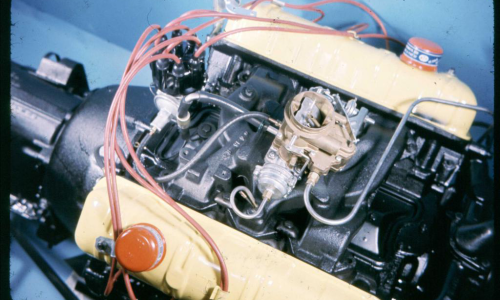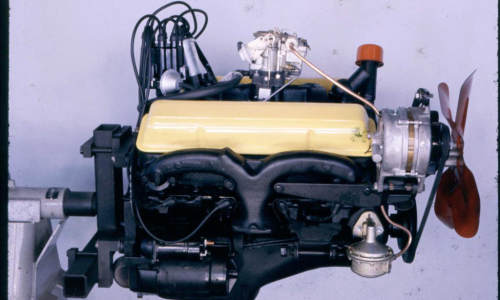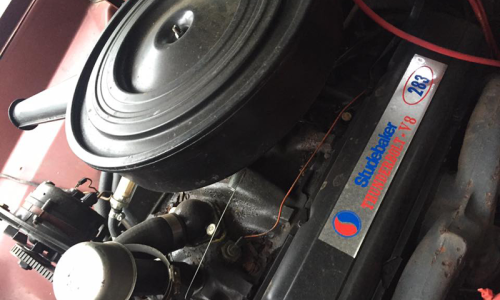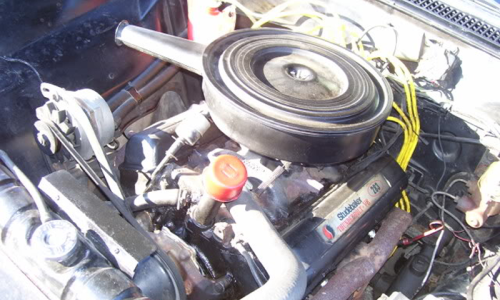For sale: 2004 GTi 180 206 Peugeot
Specifications
The 283ci V8 engine has been the subject of extensive debate among Studebaker enthusiasts, and many rumours exist with respect to its source and precise specification.
It is generally agreed that the Sports Sedan engine was manufactured by GM subsidiary McKinnon Industries, in St Catherines, Ontario. The same plant is believed to have supplied 283 engines used in Canadian built Pontiacs and other GM vehicles. Many people over the years have suggested that these McKinnon V8 engines were unique when compared to other 283 engines built in other GM plants throughout the USA. It is often suggested that the McKinnon engines had forged steel crankshafts and con-rods, cylinder heads designed for a 4-barrel carburettor, heavy duty timing chains, valve rotators, high nickel content engine blocks/heads and thicker cylinder walls. There is also a rumour that not all 283 engines fitted to Studebakers came from the McKinnon plant, and that some would have been sourced from other US foundries if supply was insufficient. In dissent, others have argued that these specifications are incorrect, or that all 283 engines of this period had features such as forged steel crankshafts (among other items), and therefore the engines are no different to other GM equivalents.
Despite significant debate on this topic and much hearsay evidence from both sides of the fence, we have not seen any direct comparison done between the part numbers and specifications within a McKinnon engine, versus other 283 engines produced by other GM plants during the same era. As such, we cannot make any solid conclusion with respect to this engine being unique. A pull-down comparison of each engine would be necessary to put these arguments to rest once and for all.
As in the previous sections of this guide, several owners of these McKinnon engines have confirmed Studebaker’s 283 engine serial numbers and casting codes on the head and engine block. In the absence of an original build sheet, the additional characteristics listed below are also applicable to the 283ci engines used in Studebakers:
- “CANADA” is cast into the engine head, the intake manifold and on the plugs and air filter.
- Crankshaft part number is “3876784”.
- Engine block and heads were painted matt black.
- Early valve covers were non-embossed and painted Studebaker yellow. However, from some point during the 1965 model year (specific date unknown), all valve covers were painted matt black. A decal was applied to these reading “Studebaker Thunderbolt V8”.
- Studebaker fitted engines had a revised fuel pump design (the original GM design interfered with Studebaker’s front cross-member).
- Unlike other 283 GM engines, the Studebaker engines we have sampled have not had an engine foundry code confirming their plant of origin. This is usually a code that is stamped in front of the engine serial number. For the St Catherines plant engines, we expected to see code “K”, however, it seems that the Studebaker blocks were ‘anonymised’ in this respect.
Vehicle location
Australia , NSW , Strathfield
I'm suddenly passionate about modern-classic Peugeot's again (something that happens a few times a year), and then this rare white GTi comes up on Gumtree Australia with just 79,000km in September 2022.. Asking $9,800 it's at the high end, but those Ks are extremely low and it looks in good order.
Very few details were given in the original advertisement (which you can see here), but they did note the car had a full service history, and came with two keys.
Trawling through forums it has become clear to me that although the 206 is a quick and fun car, no one seems to have many positive things to say about the engine's reliability. I'm not sure what aspect precisely is unreliable, but I still love the way these look and would like to have one some day - given that the 205s now seem way out of reach price wise!.
Got one? Add yours to the register and tell us a bit about it!









